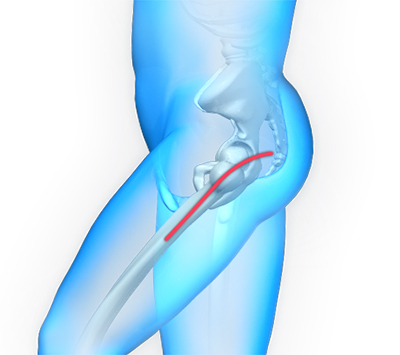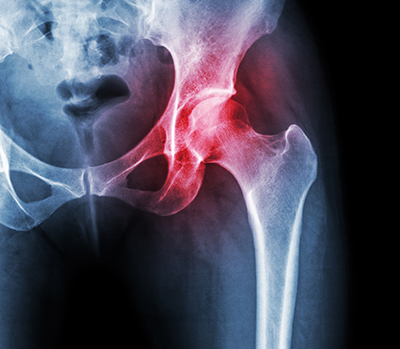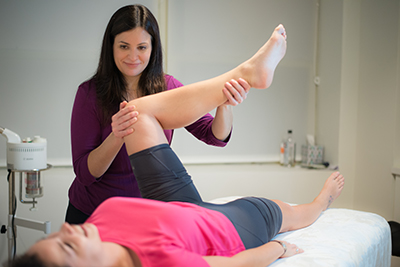Posterior Approach

Posterior hip replacement is a minimally invasive hip surgery performed to replace the hip joint. It is also referred to as muscle sparing surgery because no muscles are cut to access the hip joint, enabling a quicker return to normal activity.
The posterior approach is traditionally the most common approach used to perform total hip replacement.
In posterior hip replacement, the surgeon makes the hip incision at the back of the hip close to the buttocks. The incision is placed so the abductor muscles, the major walking muscles, are not cut.

Indications
Hip replacement is indicated in patients with arthritis of the hip joint.
Arthritis is a condition in which the articular cartilage that covers the joint surface is damaged or worn out causing pain and inflammation. Some of the causes of arthritis include:
- Advancing age
- Congenital or developmental hip diseases
- Obesity
- Previous history of hip injury or fracture
- Increased stress on hip because of overuse

Symptoms
Patients with arthritis may have a thinner articular cartilage lining, a narrowed joint space, presence of bone spurs or excessive bone growth around the edges of the hip joint. Because of all these factors arthritis patients can experience pain, stiffness, and restricted movements.

Diagnosis
Your doctor will evaluate arthritis based on the characteristic symptoms and diagnostic tests. Your orthopedic surgeon will perform a physical examination, order X-rays and other scans, and also order some blood tests to rule out any other conditions that may cause similar symptoms.

Procedure
Posterior hip replacement surgery involves the following steps:
- The procedure is performed under general anesthesia with the patient lying on their side in a lateral position on the operating table.
- An incision is made close to the buttocks beyond the abductor muscles.
- The surgeon separates the muscles and tendons to gain access to the hip joint
- The thigh bone or femur is separated from the hip socket, acetabulum.
- The damaged femoral head is cut off and the bone is prepared to receive the femoral component of the prosthesis.
- Then the new femoral component is inserted into the femur bone and the femoral head component is placed on the stem.
- The acetabular surface is then prepared and the acetabular component of the prosthesis is inserted.
- A liner made up of plastic, metal or ceramic is placed inside the acetabular component to provide a smooth, gliding surface.
- Once the artificial components are fixed in place, the instruments are withdrawn, soft tissues are re-approximated, and the incisions are closed with sutures and covered with a sterile dressing.
The advantages of the muscle sparing posterior approach include:
- High success rate
- Minimally invasive
- No muscle damage
- More precise placement of implants
- Allows excellent visibility of the joint

Postoperative Care
After posterior hip replacement surgery, you will be instructed to follow certain hip precautions to prevent your new hip from dislocating. These guidelines include not bending or flexing the hip past 90 degrees, no crossing of legs, and no rotating the operated leg inward.
Your doctor will also give you other instructions to follow at home for a faster recovery. These include:
- Take medications as prescribed to relieve pain and prevent infection.
- Participate in physical therapy to restore hip function and strength.
- Eat a healthy diet and do not smoke to facilitate healing and promote a faster recovery.
Contact your doctor if you observe increased swelling or redness in the operated area.
Posterior hip replacement is the most common approach to total hip replacement surgery. The incision is made behind the hip avoiding the major walking muscles. Posterior hip replacement surgery helps to regain the normal function and stability of the hip joint in patients with arthritis.
Talk to your doctor if you have any questions or concerns regarding posterior hip replacement.
